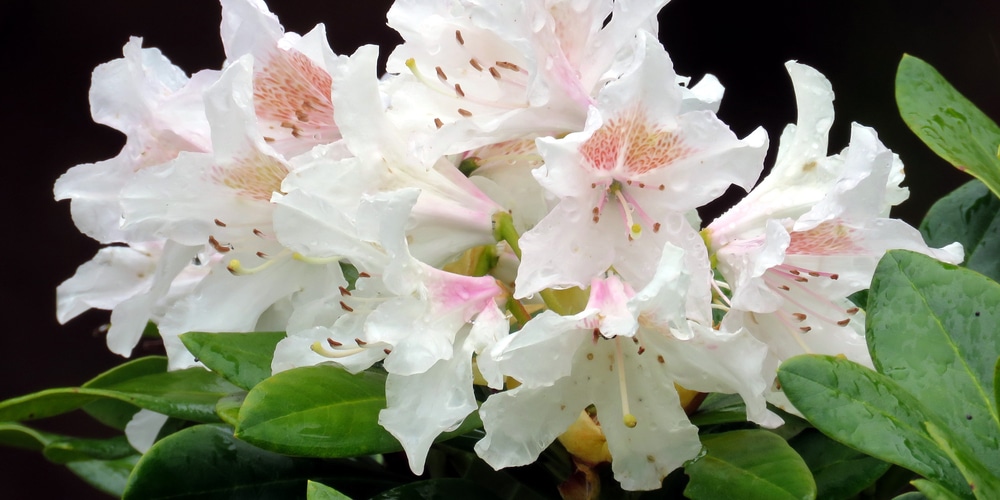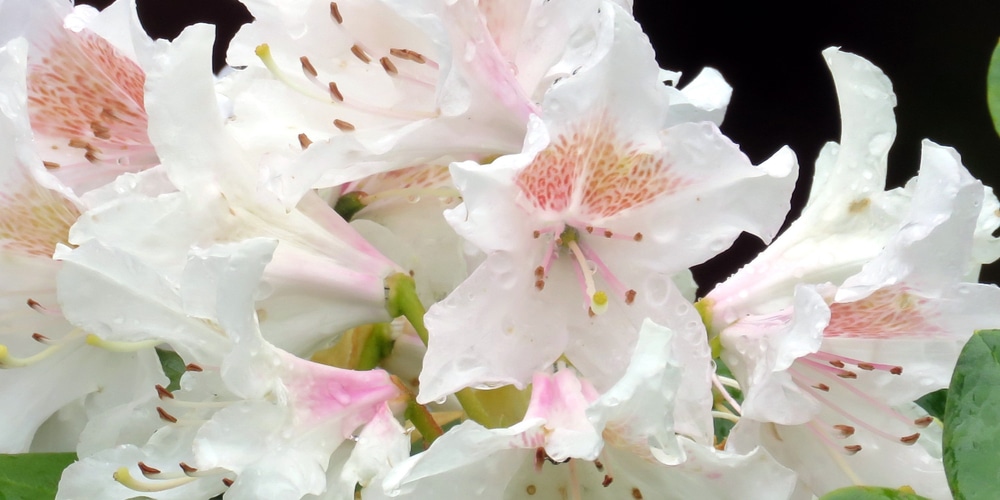The state of Delaware is often overshadowed by its larger neighbors, but it has a lot to offer in terms of history, culture, and natural beauty. During the spring, one of the most impressive displays of Delaware’s natural beauty can be seen in the form of its azaleas.
These flowering shrubs are found in different parts of the country, but the Delaware Azalea or commonly known as Delaware White Valley Azalea, shows off its colors in late April to early May.
The blooming of Delaware’s azaleas signals the start of springtime in the state. If you’re interested in learning how to take care of these beautiful flowers, read on for everything you need to know about Delaware azalea care.

| Botanical Name | Rhododendron ‘Delaware Valley White’ |
| Common Name | Delaware Valley White Azalea |
| Plant Type | Perennial |
| Flower Color | Bright white trumpet-shaped flowers with an open center |
| Size When Mature | 36 – 48 inches tall |
| Bloom Time | Spring |
| Sun Requirements | Full to partial sun |
| USDA Hardiness Zones | 5 – 8 |
| Soil PH Range | 5.5 – 6.2 |
| Soil Type | Well-draining, acidic, fertile soil |
| Water Needs | Medium |
| Native Area | Northern America, Delaware |
What You Need to Know About Delaware Azalea
The beautiful bright white flowers of the Delaware Azalea signal the beginning of spring in the state. You’ll easily recognize its snow-blanketed look, with showy blossoms that measure around 2 to 3 inches wide. Thanks to its ability to tolerate different soil types, this azalea can be found in many gardens across Delaware.
While the flowers would only bloom for about 3 weeks during the spring, in the short three-week span, you’ll be able to witness a magnificent show. It works great as a border plant or low hedge, and you can also use it as a standalone specimen.
After the flowers fall off, they will be replaced by small, glossy green leaves that turn red or bronze in the fall. The Delaware Azalea can reach a height of 4 feet tall and a width of 6 feet, making it a top choice for gardeners who are looking for an azalea that can provide a nice backdrop for their other plants.
Unfortunately, its stems are poisonous and aren’t recommended if you have pets that like to nibble on plants.
How to Care for Delaware Azalea
Here’s everything you need to know about growing and caring for a thriving Delaware Azalea:
Light
A fast-growing shrub, the Delaware Azalea can tolerate both full sun and partial shade. In fact, it is recommended that you plant this azalea in an area where it will receive morning sun and afternoon shade to prevent the flowers from getting damaged by the heat.
It doesn’t require much sunlight, as it grows happily if it receives at least 4 hours per day but can tolerate even up to 8 hours of sun.
However, take note that it doesn’t take heat well and may suffer from leaf scorch if it’s exposed to too much direct sunlight, especially during the hot summer months.
Water and Soil Needs
During the first year of growth, the Delaware White Valley Azalea needs to be watered at least 2 times per week. For hotter months, you may need to water it more frequently. Once established, you can tone down your watering frequency to 1-2 times a week, given that the soil is moist but not soggy.
Additionally, it does in most soils but prefers acidic to neutral soils that are well-drained. It’s important to note that this azalea doesn’t do well in wet or clay soils. It grows pretty well in fertile and organic-rich soils with a well-draining capability.
Temperature Requirements
If you’re in USDA zones 5 – 8, good news! You’ll have no problems growing Delaware Azalea in your garden. This shrub can withstand temperatures as low as -10 degrees Fahrenheit.
However, its ideal temperature falls within 10 – 30 degrees Fahrenheit. If you live in an area with a hot climate, take extra care of your Delaware Azalea during the summer months as it may suffer from leaf scorch.
Fertilizer
The best fertilizer to use on a Delaware Azalea is a slow-release fertilizer. Choose one that’s high in organic matter and low in nitrogen. You can also find fertilizers in the market that are specifically made for azaleas.
It’s best to apply fertilizer to your Delaware Azalea in early spring. Usually done before it first blooms during the season to help give it a boost and for bountiful flower production.
Common Diseases
Some Azalea varieties are prone to diseases, but the White Valley variety isn’t part of them. It is relatively disease-resistant, making it easier for gardeners to take care of.
However, there are still some diseases that can affect your Delaware Azalea. This may include Phytophthora root rot, powdery mildew, and leaf spot. They’re easy to spot, and you can quickly take care of them by using the right fungicide.
Delaware Azalea Propagation
To fully understand how to propagate Delaware Azaleas, you must first know that there are two types of azaleas: evergreen and deciduous. Evergreen azaleas keep their leaves all year round, while deciduous azaleas drop theirs during the fall season.
The Delaware Azalea is an evergreen variety, which means that propagation can be done any time of the year. However, for best results, it’s recommended that you propagate it during early spring before it blooms. The simplest way is to propagate using cuttings.
Like you would with any other plant, make sure to choose a healthy mother plant that doesn’t show any signs of distress or disease. Measure approximately 6-8 inches from the tip of a stem and cut it with a sharp knife. Fewer leaves are okay because you’ll be removing some of them later on.
Remove the bottom leaves, and let them dry for a few days. This will help prevent the spread of diseases and will also help the plant form a callus. You’ll see a white area forming where the leaves used to be – this is what you want.
After a few days have passed, it’s time to plant the cutting. Fill a pot with well-draining potting mix and make a hole in the middle. Gently insert the cutting and water it well.
Keep the soil moist but not soggy, and in a few weeks, you’ll see new growth. In about 6-8 weeks, you’ll notice that the roots have formed, and the plant is ready to be transferred to a bigger pot or planted in your garden.

